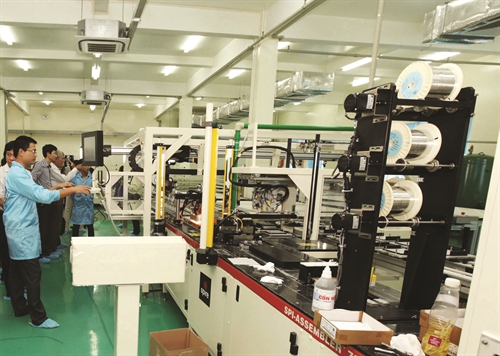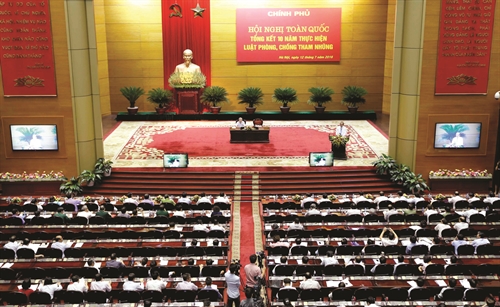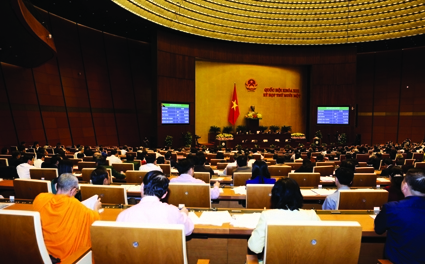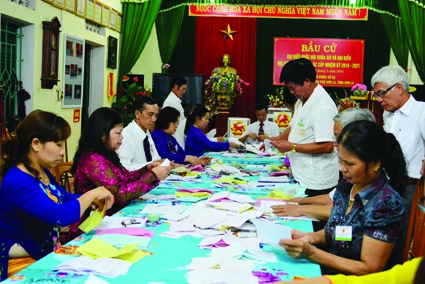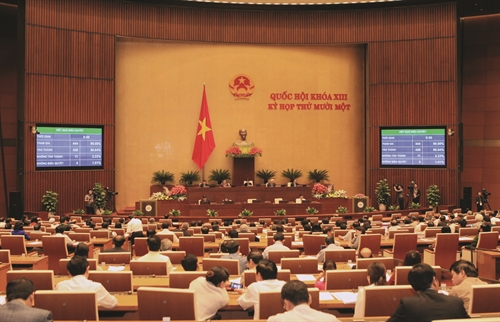Chu Bao Khanh[1]
Associate
Russin & Vecchi Hanoi[2]
Until November 2014, the seals of most organizations were gathered under one regulatory framework[3] (former seal regime). The Regime governed issuance, use and management of seals. State authorities, private organizations, and commercial enterprises were lumped together and followed this framework. As individual needs diverged, this single regime of organizational seals created some disharmony and an unfriendly environment for the business community. To address the issue, during 2014-2016, the Vietnamese Government enacted two major pieces of legislation. Together they have created new, more compatible rules for organizational seals (new seals regime). The new rules are embodied in the new Law on Enterprises 2014 (LOE 2014)[4] and the Government’s Decree No. 99/2016/ND-CP[5] (Decree 99).
The new seal regime divides organizations into three categories:
(i) Enterprises, incorporated under the Law on Enterprises (Law No. 60/2005/QH11 dated November 29, 2005 and its successor, the LOE 2014) and Law on Investment No. 59/2005/QH11 dated November 29, 2005 (LOI), collectively “enterprises”;
(ii) Non-economic organizations, including: state bodies, social organizations, religious organizations, social funds, charitable funds, non-governmental organizations, and international organizations that operate in Vietnam, collectively “non-economic organizations”; and
(iii) Economic organizations: enterprises or cooperatives incorporated under other laws. These economic organizations include: (a) securities companies; (b) insurance companies; (c) law firms; (d) notary offices; (e) cooperatives; and (f) judicial expertise offices[6], collectively “economic organizations”.
The seal regime, applied to an organization, varies among these three categories. This article will explore the changes introduced by the new seals regime. We will also examine its scope, limitations, and impact.
ENTERPRISES UNDER THE NEW SEAL REGIME
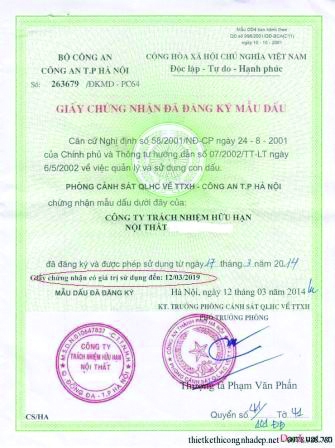 |
| Seal specimen registration certificate __Photo: Internet |
Under the former seal regime, the Government’s control of an economic organization’s seal was two-fold: (i) the formation (shape, quantity, and content) of seals; and (ii) the management and use of seals. The new seal regime, specifically the LOE 2014, grants enterprises new freedom involving all of these. Commercial considerations now have a larger impact.
(i) Formation of seals
An enterprise now has the freedom to create its own seal: shape, number, and even content. This is the most notable reform. There is almost no restriction on the way an enterprise can design its seal, provided that it must contain the name and business registration code of the enterprise. An enterprise may select any shape, size, ink color, image, symbol, or language, etc. Three contents, however, may not appear:
l national flag/emblem and the Communist Party’s flag;
l names, symbols, or images of the State or of State agencies; and
l contents that are contrary to Vietnam’s history, culture, ethics and traditional customs,
There is another limitation. In case an enterprise has multiple seals, all of them must be identical. This new regulation is exactly contrary to the former seal regime, which required that duplicate seals must have the same content as the original, but must carry a distinguishing mark. The amendment may complicate the internal management of seals. Realistically, however, the change is sensible.
What makes this change special and welcome is that an enterprise seal is now truly under the control of the enterprise itself. Under the new seal regime, the authorities have nothing to approve. That is, there is no longer just another form of permit or license that a newly established enterprise must obtain from the authorities before it can carry out its business as was the case under the former seal regime. Similar to its name, an enterprise is now only required to notify the local business registration agency in writing of the sample, quantity, and the effective date of its seal before using it.
The validity of seals is indefinite. Enterprises need no longer file for an extension of a fixed term seal. The LOE 2014 is silent on who can make seals. Enterprises are still likely to have their seals made by a licensed seal maker.
(ii) Management and use of seals
Moreover, the function of the seal of an enterprise is no longer fixed by law. The LOE 2014 clearly provides that an enterprise has the freedom to regulate the use and to manage its seals. It will do so in its Charter. That is, for example, enterprises need not even use seals in their everyday business operations or documents if they choose not to do so. For the time being, this freedom is limited by external facts. For example, certain legal documents still require a seal. That is, the need to use a seal exists in separate regulations. A synchronization effort from the Government is needed in order to coordinate the need for a seal on some documents with the new regime that permits but does not require an enterprise to use a seal. This process, however, will take time, so enterprises should be careful and be aware of changes of regulations on the use of an enterprise’s seal.
NON-ECONOMIC ORGANIZATIONS UNDER THE NEW SEAL REGIME
Unlike enterprises’, the seals of non-economic organizations under the new seal regime are mostly unchanged, except for the regulation on making additional seals.
(i) Formation of seals
Under the new seal regime, a seal exists in one of four forms: an ink seal, a raised seal, a mini (ink/raised) seal or one imprinted on sealing wax. These forms already existed under the former seal regime. They were, however, not clearly defined and classified as they are now. An ink seal is used in most circumstances, while a raised seal or sealing wax is used for specific purposes. For example, schools or universities affix raised seals on certificates, diplomas and degrees.
The former seal regime’s requirement of the permitted number of seals remains unchanged. That is, a non-economic organization is generally permitted to have only one seal. It may apply for or register a duplicate seal in some circumstances. Specifically, in case it requires a duplicate ink seal, the duplicate seal must still be approved by the competent authorities. Oddly, an approval is not required if it decides to have an additional raised seal, mini seal or one imprinted on sealing wax. In these limited circumstances, it is only required to register the additional seal. The reason for this exception is not obvious. Even so, it provides non-economic organizations with a method to avoid the administrative burden of obtaining additional seals.
Only the seals of certain non-economic organizations can be engraved with the national emblem. They are the Government, the National Assembly, ministries, courts, and other governmental agencies. In fact, formats (ie, shapes and sizes) and contents of a seal are regulated by law. Previously under the former seal regime, such formats and contents were provided by a circular of the Ministry of Public Security[7]. For the time being, we are not certain whether this Circular 21 will remain current under the new seal regime. It may be replaced. Even so, the shape and ink color of a seal are fixed by Decree 99. Specifically, a seal must be round and its ink must be red.
As in the case of an enterprise’s seal, contents of additional seals (either ink, raised, minimized or one imprinted on sealing wax) must be the same as the original ink seal. The additional seals no longer need distinguishing marks.
In addition, it is interesting that a seal certificate under the new seal regime has no term of validity. As in the case of enterprises, the term of the seals of non-economic organizations is indefinite. Likewise, the silence of Decree 99 on the freedom of non-economic organizations to make their own seals makes it likely that they, too, must have their seals made by a licensed seal maker.
A foreign organization that has been formed abroad and that has the right to operate in Vietnam is considered to be a non-economic organization. It is entitled to use its foreign organizational seal in Vietnam, subject to registration with the Vietnamese authorities, and provided that the contents of the seal is compliant with Vietnamese law. For example, a seal of a foreign non-economic organization must not contradict Vietnamese history, culture, ethics and traditional customs. Such a foreign organization may also apply for a seal in Vietnam with regulatory formats that are consistent with the new seal regime.
(ii) Management and use of seals
Decree 99 considers the seal of a non-economic organization to be a “special tool”, but this term is used without further explanation. Affixing a non-economic organization’s seal onto an unauthorized person’s signature is prohibited. This prohibition implies that only a person who has the right to act on behalf of a non-economic organization, ie, the legal representative or an authorized person, has the right to use its seal. This seems consistent with the use of the seal by other types of organizations.
There is no significant change in management of the seal. The seal must still be managed by its top management and held at its office. Only the senior manager may permit the seal to be carried outside the office. The senior manger and/or other persons authorized in writing by him/her can carry the seal out of the office. Furthermore, the senior manager is responsible to establish internal regulations on the management and use of the seal.
The seal must be returned to the competent authorities: (i) when the seal is re-registered (due to damage to the seal, change of its form, or change of its name); (ii) when the organization is divided, separated, merged, consolidated, dissolved; (iii) when its establishment license is withdrawn, (iv) when the organization finds a seal that was lost; (v) when the organization is suspended by the authorities; or (vi) when the seal is mismanaged or misused, including, falsification, usurpation, sale and purchase, destruction of the seal, or use of unregistered seal.
ECONOMIC ORGANIZATIONS UNDER THE NEW SEAL REGIME
The regulations on formation, management and use of an economic organization’s seal under the new seal regime are mostly the same as those for non-economic organizations, except for some new rules on issuance of additional seals. Decree 99 provides that an economic organization may, at its own discretion, decide to obtain duplicate seals. This seems to mean that, in addition to its original ink seal, an economic organization can also have one or more seals of any type (ink seals, raised seals, minimized seals or sealing waxes) without approval. It is only required to register the additional seals.
TRANSITION BETWEEN THE TWO SEAL SYSTEMS
The transition between the former and the current regimes for non-economic organizations and economic organizations is quite clear and simple. It is clear that non-economic organizations and economic organizations, that obtained their seals under the former seal regime, need not re-register or apply for re-issuance of their seals if they are compliant with the new seal regime. Unless Circular 21 is replaced, their seals are likely not to be affected. If Circular 21 is replaced, the seals may be subject to re-issuance to be in line with the new circular.
An enterprise that obtained its seal under the former seal regime may continue to use its existing seal. If an enterprise loses its existing seal or if it wishes to make a duplicate of its existing seal, the LOE 2014 requires it to file a notification with the authorities. If an enterprise wishes to make a new seal, apart from filing a notification, it needs only return its old seal and seal certificate to the authorities.
However, an enterprise should pay attention to the transition between the two seal systems. The LOE 2014 and other laws as they relate to seals are not synchronized. That is, and to repeat, although the LOE 2014 grants enterprises the freedom to decide when and how to use the seals, different legal documents still require the use of an enterprise’s seal for certain transactions or in certain cases. For example, technology transfer contracts must be sealed by all participating parties[8]. A similar regulation applies to housing contracts[9]. In these cases, one cannot apply the new seal regime and so omit affixing the seals in its day-to-day business operations.
There is some hope that the rules might eventually be unified as some attempts to synchronize regulations have been carried out by the Government. This process, however, will take time and is likely to be incremental. Enterprises should remain alert to any change in the regulations. Furthermore, as tempting as it is to move forward quickly, the new seal regime should be adopted with proper caution. Despite the change in law, a majority of Vietnamese companies and agencies still seem to be “obsessed” by seals and expect counterparties to affix their seal no matter what. This is the result of a long period of living under the strict regime of seals. It will take time for the new rules to take root fully. Companies should be cautious when putting reform into practice.
IMPACT OF THE NEW SEAL REGIME
There is one obvious observation of the new seal regime. It brings about close to maximum freedom for enterprises to make, manage and use their seals. Non-economic organizations and economic organizations are, to some extent, also relieved of administrative burdens when they apply for an additional seal. As compared to the former seal regime, the new seal regime is indeed a large leap toward a more business-friendly legal environment.
Apart from these positive regulatory outcomes, there is one additional positive development under the new seal regime. It has addressed the practice of usurpation of seals when conflict arises. In the past, and in a number of actual cases, a company’s operations were frozen because the seal was withheld or seized by a party in conflict with the legal representative of the company. Though the corporate seal had legal significance in Vietnam, the law did not address the act of taking or withholding a seal. Therefore, companies could do nothing when their seals were seized. Such conduct can no longer paralyze the company.
The act of taking or withholding a seal of a non-economic organization or an economic organization is prohibited by Decree 99. Under Decree 99, and in addition to normal annual investigations, a non-economic organization or an economic organization may be required to undergo an extraordinary investigation on management and use of its seal. This can occur if any mismanagement or misuse of the seal is reported. By reporting to the authorities, the legal representative of a non-economic organization or an economic organization may ask the authorities to recover the seal from a wrongdoing party, or simply apply for re-issuance of a new seal. Alternatively, an economic organization may choose to make a duplicate seal for a future emergency.
There is another way for an enterprise to mitigate the risk of being paralyzed. An enterprise may exclude the use of its seal in daily operations by so providing in its charter. It is not a perfect option since there are several cases in which a seal is required by law or by a counterparty.
In conclusion, with the exercise of some caution, we think that the new seal regime will play an important role in removing past burdens and risks and the need for seals has placed on organizations.-


